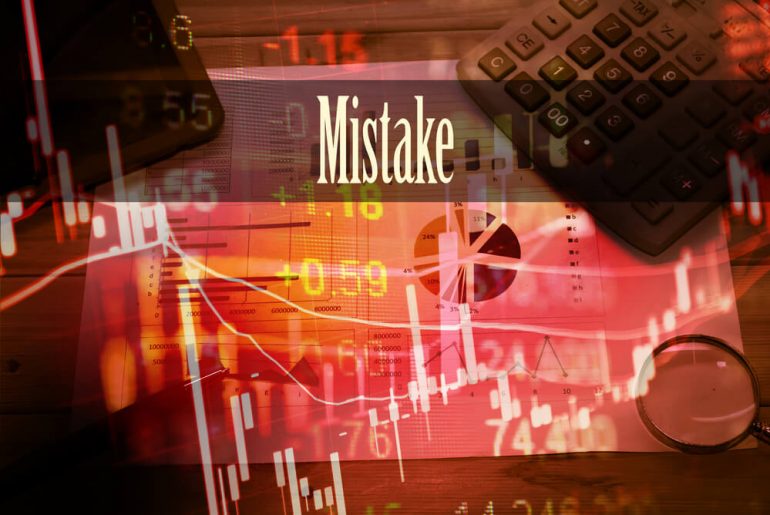Trading might seem simple. But the reality is more complex, filled with potential pitfalls, especially for unprepared people. Mistakes are inevitable in trading, yet they offer valuable lessons that can lead to success. This article outlines common trading mistakes and actionable ways to avoid them, helping traders at any stage refine their approach and protect their capital.
1. Trading Without a Plan
Every successful trader operates with a detailed plan that outlines their goals, strategies, and risk management approach. Trading without a plan is like navigating without a map. A trading plan should include clear objectives. Are you aiming for long-term growth, side income, or full-time trading? It should also define entry and exit strategies, acceptable risk levels, and the types of assets you want to trade. A solid plan ensures you stay disciplined and helps prevent impulsive, emotional decisions that can lead to losses.
2. Trading Too Much, Too Soon
One of the most common pitfalls for new traders is diving in with high volume, lured by quick profits. This approach increases the risk of significant financial loss and can lead to burnout. The key is to build up slowly. Start with a demo account to familiarize yourself with market movements without risking real money. When transitioning to a live account, keep initial trades small and focused on one or two markets. This way, you learn to manage risk effectively and develop a systematic approach that can scale with experience.

3. Emotional Trading
Emotions are powerful and can significantly influence trading behavior. After a streak of successful trades, it’s easy to feel invincible and push boundaries. Conversely, after a loss, traders may feel pressured to make impulsive decisions to recover quickly, which often leads to bigger losses. The best traders recognize this and put safeguards in place. Before entering any trade, ask yourself if it fits your strategy or if you’re acting on impulse. Take breaks when needed and reflect on the potential impact of emotions on your actions.
4. Guessing Without Preparation
Trading isn’t a game of chance; it’s a discipline that requires preparation and knowledge. Entering a trade without understanding market trends or relevant news is akin to gambling. Successful traders research market dynamics, study historical data, and stay informed on economic events that may influence price movements. Countless resources are available, from articles to demo trading accounts that provide hands-on learning experiences. By investing in your education, you make more informed decisions and reduce the likelihood of costly mistakes.

5. Skipping Stop-Loss Orders
A stop-loss order is a critical tool in risk management. It automatically closes your position when the price reaches a certain level, limiting potential losses. Many traders overlook this feature, hoping their position will recover, only to watch it sink further. Stop-loss orders set a boundary for potential losses and protect your capital from significant setbacks. Advanced traders may prefer flexible, ‘soft’ stop-losses that they adjust manually, but this approach requires experience. For most, automated stop-losses are an essential safety net.
6. Taking Excessively Large Positions
The allure of a big win can tempt traders to risk a disproportionate amount of their capital on a single position. While a large position may offer higher rewards, it also comes with greater risk. If the market turns against you, a substantial portion of your capital can be wiped out in one trade, creating financial strain and psychological stress. Position sizing strategies, such as the 1-2% rule (where you only risk 1-2% of your capital on any given trade), help maintain a balanced approach and prevent catastrophic losses.

7. Managing Too Many Positions
Trading multiple positions simultaneously can spread your attention thin, increasing the chance of mistakes. Monitoring several trades requires time and focus, which can only be possible with automated systems. To avoid overextending, start by trading a limited number of positions until you become proficient in managing them. As you gain experience and develop an efficient tracking system, you can gradually increase your exposure. Remember, quality over quantity often leads to better outcomes in trading.
8. Overleveraging
Leverage can be a trader’s best friend or worst enemy. It allows you to control larger positions with less capital, amplifying gains and losses. Traders unaware of leveraging functions may be overexposed and vulnerable to rapid capital depletion. The best practice is to start with minimal leverage until you understand how it affects your trades. Even then, use it cautiously. Just because a broker offers high leverage doesn’t mean you need to use it to the fullest. Properly managed leverage can enhance returns, but when misused, it can lead to devastating losses.

Trading mistakes are part of every trader’s journey, but learning from them separates successful traders. By acknowledging these common errors and adopting strategies to avoid them, you’ll be better equipped to trade confidently and protect your capital. Practice, patience, and continuous learning will lead to better decision-making and long-term success in trading.





